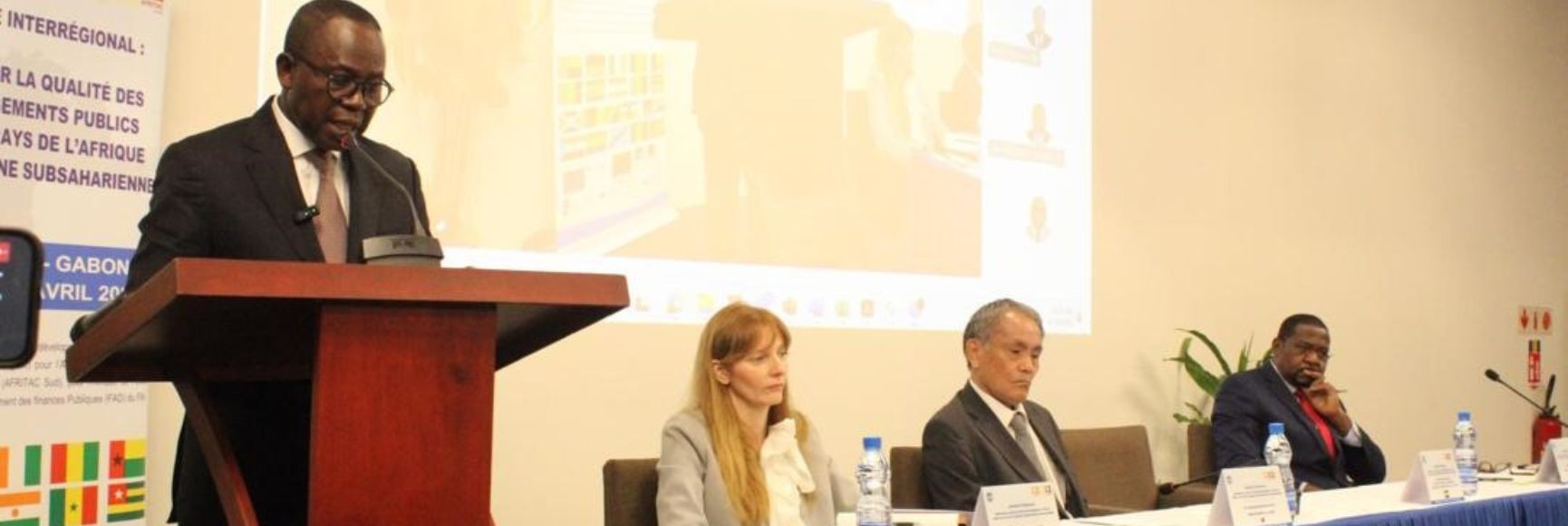Posted by Peter Murphy[1]
The IMF’s Regional Technical Assistance Center for Southern Africa—AFRITAC South (AFS)—organized a one-week seminar on Public Investment Management (PIM) at the Africa Training Institute facilities in Mauritius from November 28 to December 2, 2016. The seminar was attended by 26 participants from 10 countries[2]. The facilitators[3] outlined the IMF’s new framework (www.imf.org/publicinvestment) for assessing Public Investment Management (PIMA), and discussed with participants the application of the framework through a series of comparative case studies, group and plenary sessions.
During the discussions the participants noted a number of key PIM challenges that adversely affect the efficiency and impact of pubic investment in the region, and discussed options for addressing these challenges. In particular:
- Public investment was unduly constrained by restrictive debt targets and limited financing. The impact of fiscal rules, in particular debt limits, did not always provide sufficient protection for investment expenditure. In-addition, participants noted that productive investment expenditure was constrained by pre-existing, and thinly spread, investment commitments whose benefits were not always apparent. There was a clear view that more flexible fiscal principles and ongoing reviews of investment plans, combined with improvements in transparency and public investment management capacity would a have positive impact on country credit ratings and public investment outcomes.
- The absence of coordinated and prioritized sector policies and strategies adversely impact public investment outcomes. National and sector strategies are often outdated, weakly coordinated across sectors and levels of government, inadequately costed and form an inadequate basis for policy guidance. Poor coordination is also apparent in relation to projects undertaken by extra-budgetary entities and state-owned enterprises, where oversight and regulatory arrangements are often limited. It was suggested that more effort was required to develop comprehensive strategic plans that provide a sound, and transparent basis for resource allocation and project selection.
- There is insufficient understanding of the implications and risks of PPP investment financing; Many participants were interested in how PPPs could expand private sector participation in public infrastructure investments and hoped that such financing would not impact debt limits. It was noted that PPPs can promote the efficiency of investments, but these are complex instruments that require a well thought out strategic and legal framework. A full assessment of the fiscal risks involved, as well as considerable capacity building on the government side, is required to ensure that efficiency gains are achieved. It was also noted that many PPPs create liabilities or contingent liabilities which need to be taken into account as part of government’s debt obligations.
- There was a general concern about the need for more stringent and transparent appraisal and selection procedures for capital projects. Countries have quite different institutional arrangements in this area, and the optimal solution must be based on local circumstances and conditions. The importance of sufficient checks and balances was noted, including to ensure that the appraisal of major projects is validated by a different body than the developer of the project. This should entail an independent verification of important project parameters (i.e., cost-benefit analysis, sustainability, environmental impact). It was noted that project funding decisions should take place as part of an integrated (capital and recurrent) planning and budget process which has specific mechanisms for resolving conflicts of interest among politicians and other players, and ensuring that trade-offs are made between different sectors and policy options.
- Institutional arrangements for project management, monitoring, and evaluation are a major challenge. Project management failures, including ineffective progress reporting, were seen as a key source of project delays and cost overruns. Least-cost procurement practices often compound the problem by weakening external oversight. It was emphasized that effective procurement, project management, project monitoring and evaluation procedures are fundamental to achieving good project outcomes. Managers and professional staff in these different functions must be identified, properly trained and held accountable for successful implementation of projects.
Based on the lessons learnt from PIMAs undertaken in the region to date, and the seminar discussions, participants suggested the following pre-conditions should be in place prior to conducting a PIMA:
- Genuine leadership and demand from the political level to achieve better investment outcomes.
- Establishment of a multi- disciplinary team of counterparts to coordinate the collection of data from different public sector entities;
- Pre-mission briefing of counterparts to ensure a clear understanding of the rationale, objectives and methodologies involved in the approach;
- Wherever possible, a self-assessment should be carried out by the government before the main PEFA mission team arrives. This ensures better ownership of the exercise by the national authorities, and facilitates a more strategic set of discussions between them and the PEFA team.
[1] Peter Murphy is a PFM Advisor in AFS.
[2] Angola, Botswana, Comoros, Lesotho, Madagascar, Mauritius, Mozambique, Seychelles, Swaziland, and Zambia. Participants came mainly from ministries of finance/national development planning responsible for public investment management.
[3] Isabel Rial, Johann Seiwald, Peter Murphy, and Eivind Tandberg.
Note: The posts on the IMF PFM Blog should not be reported as representing the views of the IMF. The views expressed are those of the authors and do not necessarily represent those of the IMF or IMF policy.






